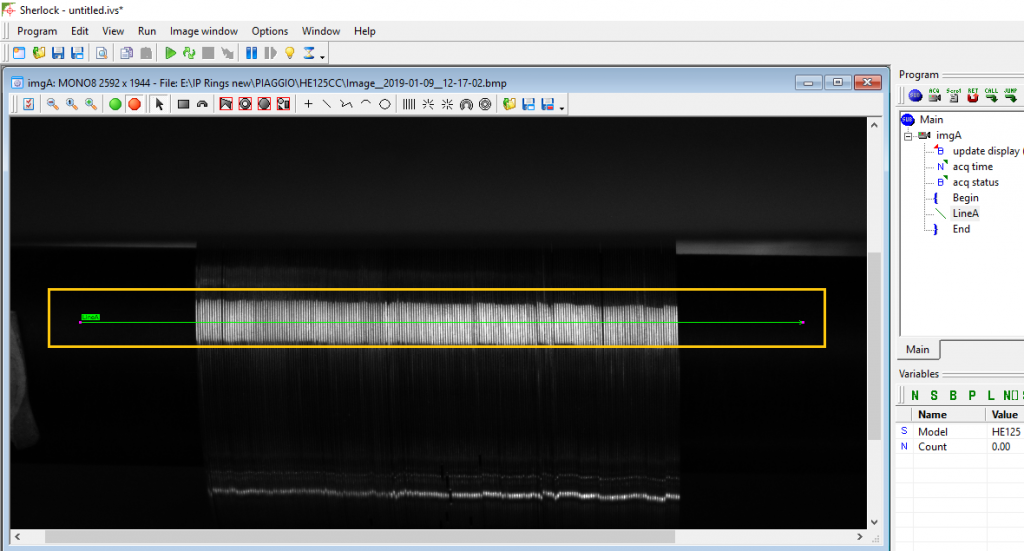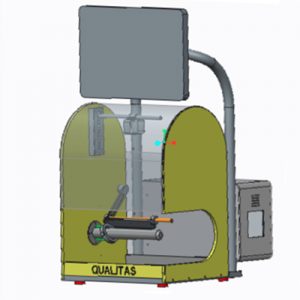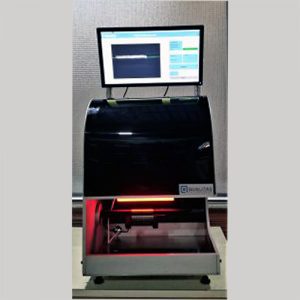Vision system ensures speed and accuracy for automotive industry
Hand-counting piston rings as small as 0.29 - 0.79 mm in width and packaging them in various batch counts, was not only adding to labor costs, but also proving unreliable in the highly competitive automotive sector. A far more reliable answer came in the form of a custom machine vision solution
Pundits predict that India’s automotive sector will emerge as the world’s third-largest passenger-vehicle market in the next decade. One of the peripheral industries that supplies this burgeoning market is the piston and piston ring market — a market that owes its success mainly to the automotive industry and its demand for higher-powered engines. IP Rings, based in Chennai, India is a major player in the piston and piston ring market.
With the continued growth of the automotive industry, there is a constant search for new efficiencies and innovative ways to enhance the associated production, packaging and distribution processes. Piston rings are primarily used to seal the engine outlet thereby avoiding the leakage of gas during the combustion process.
One ring at a time
IP Rings manufactures piston rings for Tier 1 and Tier 2 original equipment manufacturers (OEMs), and it’s imperative that each batch meet the exact number of rings specified for installation in each vehicle. At the IP Rings manufacturing facility, manual inspection had been used for sorting, counting and packaging each batch of rings before shipping them to the customer, which was time consuming and labor intensive. Each batch contains 100 or more rings varying in size from a minimum width of 0.29 mm to a width of up to 0.79 mm. As the rings come off the production line they are counted and packaged as per specifications before being dispatched. Counting the precise number of rings is critical and avoids confusion during piston set assembly. Having extra rings remaining or fewer rings than specified at the end of assembly requires recounting the rings manually to ensure there aren’t any missing piston rings. While the customer hadn’t received a high number of complaints about product quality, IP Rings needed a more reliable system to decrease cycle time and lower production costs.
Choosing the right technology
With expertise in this manufacturing environment, Qualitas Technologies, a provider of industrial automation solutions in India, approached IP Rings about automating their production process by implementing a semi-automatic machine tailored to handle their ring counting process. Qualitas has successfully used machine vision technology as an answer for automation streamlining for its clients, and they were able to demonstrate how vision technology could help IP Rings improve efficiency, lower overhead costs, and increase ROI. After learning about the benefits of vision technology, IP Rings was ready to work with Qualitas to automate their production process. For this application, Qualitas designed a vision system using Teledyne DALSA’s Sherlock machine vision software configured to a single camera solution, with a red light for illumination.
- 3D rendering of ring-counting jig
- Final setup of Jig
The Sherlock solution
“Our experience using Teledyne DALSA’s solutions made them an ideal partner for this application,” said Vinay Arabatti, Solutions Architect at Qualitas Technology. “Sherlock’s vision tools are able to ensure a high degree of accuracy by recognizing minor variations with the rings that could alter the final counting process.”
For this inspection the operator loads a batch of rings onto a specially constructed jig for the application and triggers the camera to capture the image of the rings. The camera is positioned vertically to capture images with 2592 x 1944 resolution to cover a field of view of 145mm. A red diffused bar light is mounted at a 45° angle to get a proper illuminated area, and to avoid the effect of ambient lighting. Two stoppers, one fixed, and the other movable, are provided to hold the rings within the given region-of-interest where Teledyne DALSA’s Sherlock software “counts” the rings by tracking the edges. Sherlock’s robust Edge Count Tool is able to recognize slight discrepancies such as larger gaps than expected between the rings and substances on a ring that alter its appearance. For edges that appear to be missing, Sherlock generates a warning and highlights the problem so the operator can verify the count and adjust the stack to resolve the issue.
“Our main objective here was to decrease the cycle time and increase accuracy by automating the tedious task of counting the piston rings, with the help of a highly accurate vision system,” said Arabatti. “Arresting the ambient light was a major challenge. We used a customized jig to overcome the issue. A diffused red light was used to properly illuminate the rings of all sizes and textures.”
To complete the application, Qualitas developed a fully customized user interface for the packing and shipping process using Sherlock’s advanced imaging capabilities and extensive software development library. Sherlock easily integrates to an industrial PC to share images and report statistical data. Operators start by choosing the particular model name along with the predefined number of rings for a bundle to trace the inspection. Based on the selected model name, the solution is loaded in Sherlock where the image is captured; and processed; and results are displayed as “pass” or “fail.” The “pass” batch is then sent for packing and shipping to the end customer. Cloud-based image storage provides operators with convenient access to monitor inspection results and overall performance so they can adjust inspection parameters as needed.

The piston ring counting machine has been operational for several months at IP Rings. The manual counting of 100+ rings that took 5 minutes previously is now being completed in 10 seconds, including the time needed to feed the rings to the jig, and the company is planning to deploy more of these jigs for further efficiency.
IP Rings is thrilled with its new, low-maintenance vision system and the Sherlock software that has introduced major productivity gains to the ring counting process with time savings and increased accuracy for overall production efficiency.





